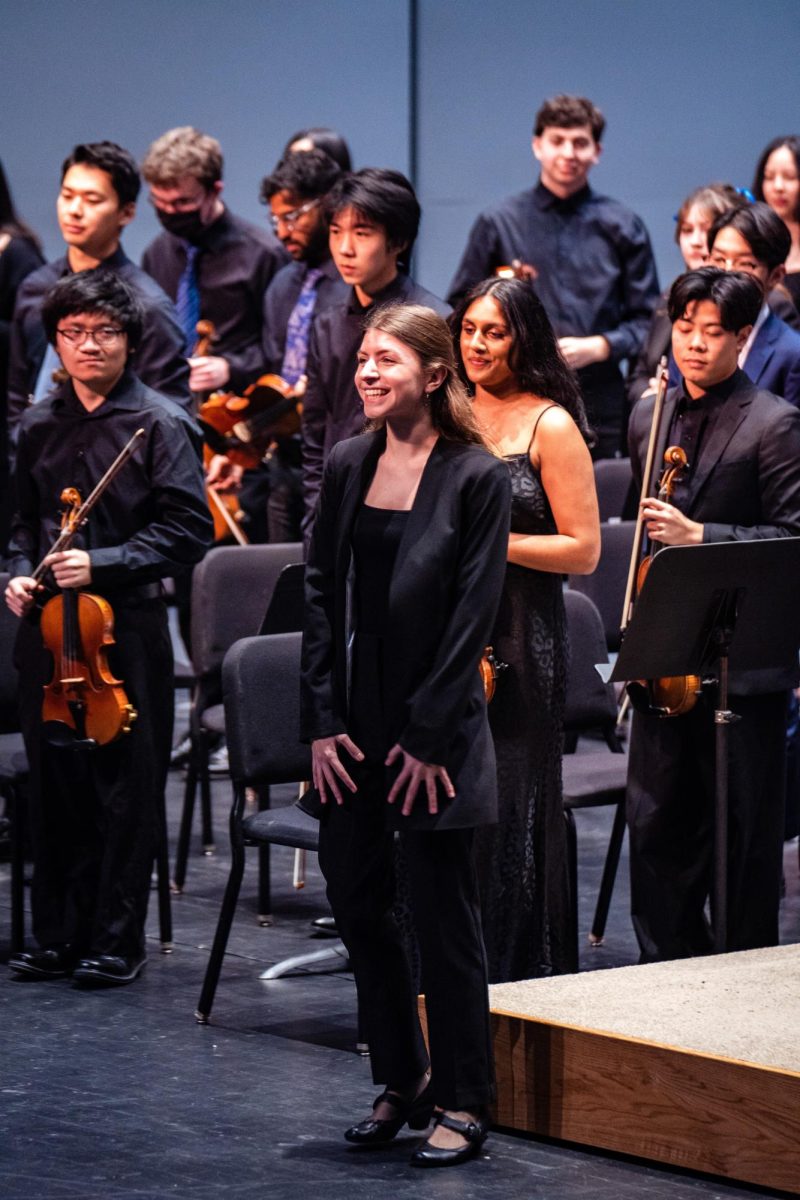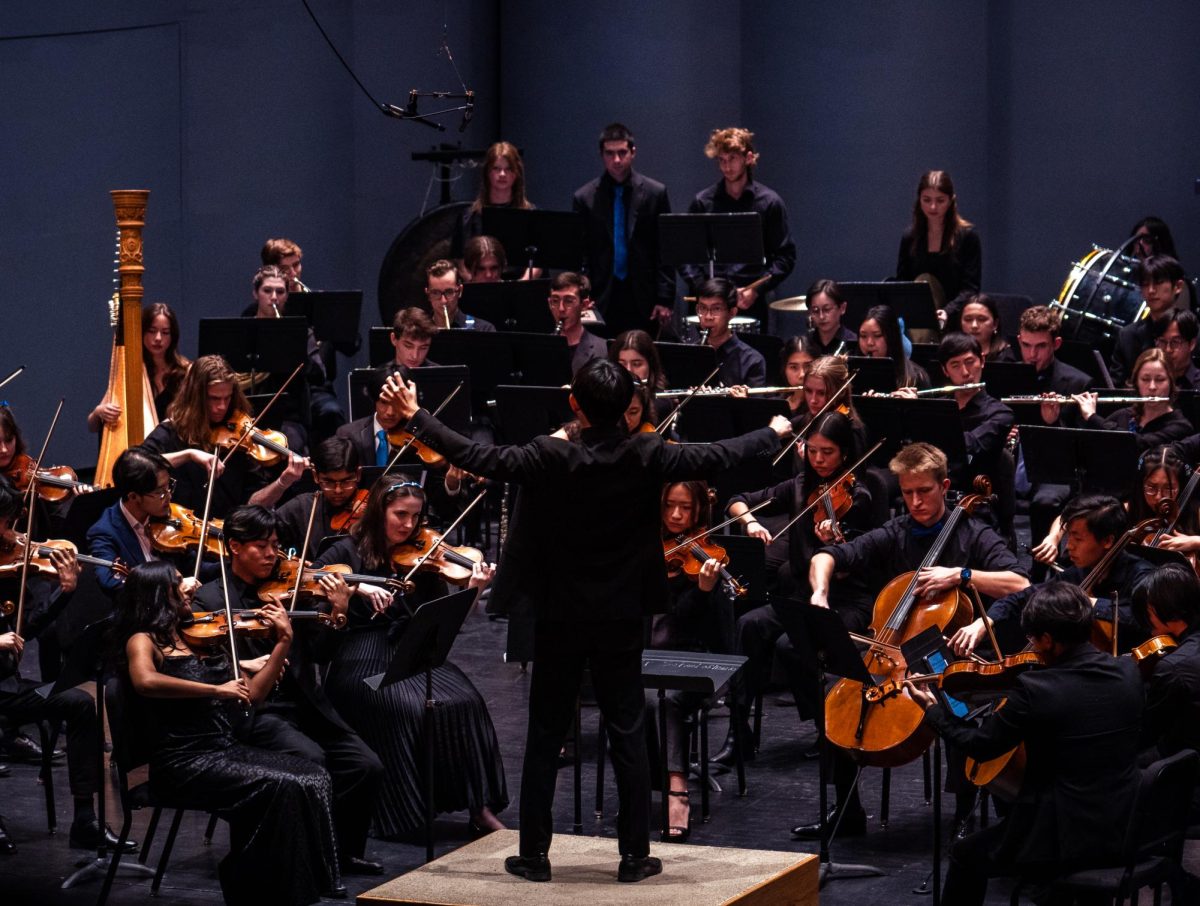The Vanderbilt Commodore Orchestra performed its fall concert, “Story of the Sea,” on Dec. 7 at Martha Rivers Ingram Hall. Felix Mendelssohn’s “The Hebrides (Fingal’s Cave) Overture” filled the first 10 minutes of the concert, and the four movements of Nikolai Rimsky-Korsakov’s “Scheherazade, Op. 35” brought the audience along through a mysterious Middle Eastern folk tale for the remainder of the night.
The performance began with the introduction of the first student conductor, sophomore Isabella Nichols. As the applause settled, Nichols began conducting Felix Mendelssohn’s “The Hebrides (Fingal’s Cave) Overture.” The 10-minute overture is inspired by Mendelssohn’s trip to the Scottish island of Staffa. It started with the soft introduction of violas, cellos and bassoons, representing the massive scale of Fingal’s Cave. As the sound of cellos and basses began to ramp up, the notes represented the waves of the water crashing against the boat and cave walls. Nearing the end of the piece, the tempo picked up, building up to the apex of the storm. The rapid changes in speed throughout the piece symbolize the chaos of the ocean as the audience is transported into the piece.
As the overture closed, senior Leon Kobayashi was introduced to the audience. As the next student conductor, he explained the story of Scheherazade and swiftly began Nikolai Rimsky-Korsakov’s “Scheherazade, Op. 35.” The piece is broken up into four movements, each being introduced by a violin solo performed by junior Nandika Chirala and representing a progression of the story.
The first movement titled “The Sea and Sinbad’s Ship,” symbolizes Scheherazade’s oceanic journey to the Kalendar Prince’s land. The second, “The Story of the Kalendar Prince,” portrayed by various solos performed throughout the orchestra, symbolizes her meeting with the prince which is followed up by the third movement, “The Young Prince and the Young Princess,” dedicated to the love affair between her and the prince. The fourth and final movement, “Festival at Baghdad. The Sea. The Ship Breaks against a Cliff Surmounted by a Bronze Horseman,” reveals her success with the Sultan as she marries him. The movement ramps up in the middle to finish off her stories and ends with a peaceful coda, representing her victory over the Sultan.
“Story of the Sea” tells the story of Scheherazade and the Sultan prince named Schariar. Believing that all women are evil and faithless, the Sultan begins to marry multiple women and vows to execute each one the following morning. One day, Scheherazade offers herself as the next bride and to save her life, she begins telling a story to the Sultan and leaves him on a cliffhanger at the end of the night. The Sultan, eager to hear the story, spares her life. Scheherazade ends the story the following day but begins a new story and leaves it unfinished as well, sparing her life again. She repeats this for one thousand and one nights, hence the name.












